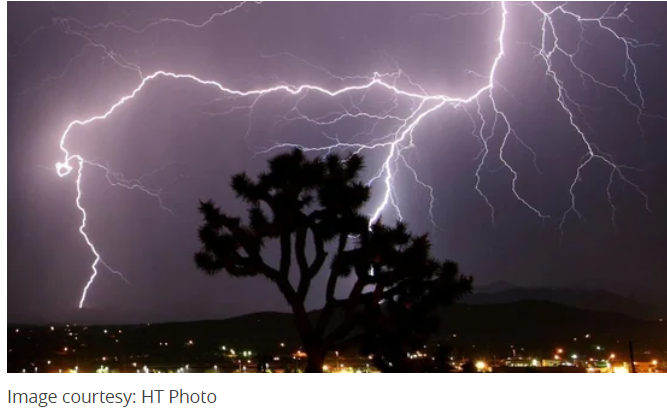Odisha has the most lightning activity but West Bengal has the highest lightning density, explains the report.
Image courtesy: HT Photo
Lightning kills more people than cyclones in India, says the Earth Networks India Lightning Report, 2019. And it could increase as much as 12% with every 1 degree increase in global warming. According to Science News, increased lightning in the Arctic is an outcome of climate change. Well, now we’re in the peak lightning season in India- from June to September-with peaks in these two months. I looked at the maps in the report: Clearly, states of the Eastern Coast, Jharkhand and Meghalaya are the most vulnerable. Odisha has the most lightning activity but West Bengal has the highest lightning density, explains the report.
Some aspects of lightning are noteworthy. For example, India Climate Dialogue reports lightning strikes farmers in the field as they toil. One reason is the warnings don’t reach the hyper-local level. Another fact is taking shelter under a tree is very unsafe. Using wired equipment can also enhance the risk during lightning. So if you must, use only battery operated devices, says the Government of Canada. And touch nothing metallic, even indoors.
What are we doing about this climate change-driven phenomenon? Ensuring timely information to the last farmer is obvious as is wider education. So are ‘safe structures’ in the most vulnerable districts, for protection against a range of events – lightning, intense rain, heat and other events that don’t require evacuation. Where viable, homes can include lightning rods or be retrofitted for safety.
Climate change is throwing new challenges at India. We need to address them rapidly and nimbly.
Article Credit: hindustantimes
